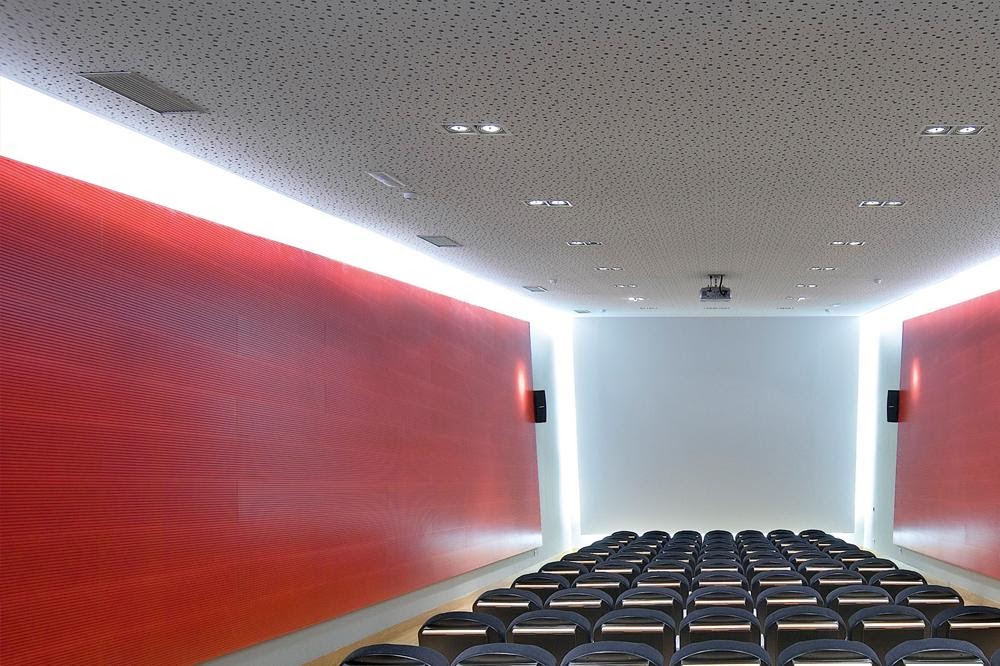If you have ever been bothered by noise in a space, you should know the concept of an acoustic panel and its virtues.
There is a wide range of products when it comes to acoustic design, some closer to the technical field, and others closer to the aesthetic field, but when we seek the balance between the two, one of the products that best represents it is the acoustic panel.
The acoustic conditioning is the set of actions and implemented materials in a given space to achieve sound absorption balanced, so that there is a controlled presence of the same, and that offers a comfort optimal use of space.
Acoustic ceiling panels are part of one of the most used techniques in acoustic conditioning. It consists of portions, typically rectangular, made up of several moldings, for covering the dividing surfaces of a space, they are mostly used on walls and ceilings.
Within this sector, there are several companies that offer solutions in the wide variety of existing spaces. One of them is Gyptech, which lots of experience working with wood, is in charge of designing and manufacturing quality acoustic panels, following the line of technology and ecology.
Wood as an acoustic material
Like the wind, sound waves travel physically without being observed by the human eye, but felt through their vibrations present in materials. Acoustic panels are usually made of wood due to the good behavior of the material in the presence of sound.
Wood, one of the most used materials in construction, is not only characterized by its aesthetic properties, but also by its acoustic virtues. Its physical characteristics are what make it one of the best materials for acoustic conditioning, and among them the following properties stand out:
- Rigidity. In the presence of sound waves, stiffness allows lower levels of vibration.
- Porosity. Being composed of fibers, it has a large number of pores that allow sound to enter and dissipate it through the material.
- Density. There are woods with high and medium degrees of density, this prevents the passage of sound waves.
In this sense, most acoustic panels are made, mainly of wood, but also of glass wool, aluminum oxide, HDF or MDF, among other materials that optimize the acoustic qualities of the panel.
Advantages of acoustic panels
Acoustic panels have several advantages that complement each other, some of these are:
● Comfort
● Aesthetics
● Acoustic control
● Economy
● Versatility
The main advantage of using acoustic panels is the comfort it offers to the users of the space where it has been placed, since a sound harmony is a feature highly appreciated by anyone who wants to feel calm wherever they are.
The regulation of noise may be more important depending on the function of the place where it is to be implemented, but any closed place where its enjoyment is sought, must have acoustic control.
Comfort is a result of acoustic control. As the acoustic panels are a covering, they allow the sound to be controlled in the areas where it is really necessary, and leave its free passage, so it is not considered a disturbing element. They allow the configuration of the sound to suit the user.
The aesthetics offered by these panels is quite varied, and since wood is such a versatile material, it increases the variety of designs. Even though there are decorative panels, any type of panel can have a pleasing aesthetic design. As wood is a commonly used material and, in addition to having a long history, most people are pleased with its presence in any of its presentations.
Another of its advantages is the economy, since being so useful and composed mainly of wood, both the demand and its production is high, which results in a product, in general terms, economical.
The versatility is another virtue of acoustic panels, for possible use in ceilings, walls, walls, floors, among others. In addition to being able to use it on different surfaces, it is also possible to configure its material composition, since not all acoustic panels are the same, everything will depend on the conditions of the space and the project to be executed.
Places where it is possible to use acoustic panels
As mentioned above, there are places where acoustic control is more important than others. This is defined primarily by the function of the space and, consequently, its dimensions.
However, despite the different uses that a space may have, acoustic panels can be present in auditoriums, theaters, concert halls, showrooms, cinemas, conference rooms, offices, among others.


